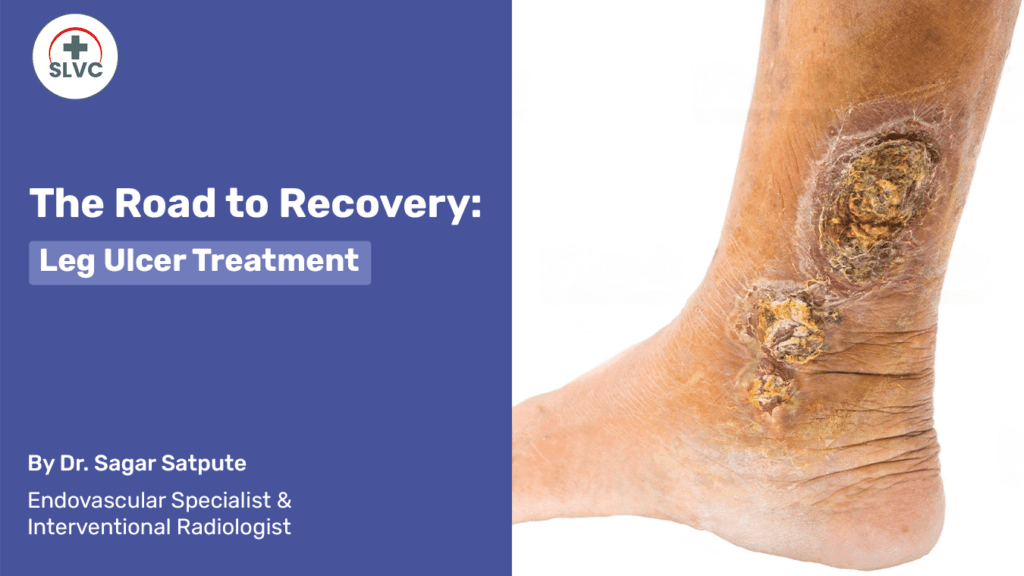To embark on this journey of comprehension, it’s crucial to first grasp the delicate dance between skin health and blood circulation. The skin relies on a consistent supply of oxygen and nutrients carried by blood vessels. When this harmony is disrupted, leg ulcers emerge as a manifestation of the body’s distress.
A leg ulcer is a wound that results from the breakdown of skin integrity and underlying tissue loss. It’s often a testament to an underlying issue, such as venous insufficiency, arterial disease, or neuropathy. These ulcers can be classified into distinct categories, including venous, arterial, neurotrophic, and mixed ulcers, each with its own set of characteristics and challenges.
Among the array of leg ulcers, venous leg ulcers hold a notable position. These ulcers stem from venous insufficiency, a condition where the veins struggle to effectively return blood to the heart. This inefficiency leads to increased pressure within the veins, culminating in the development of ulcers. Venous leg ulcers are often characterized by their location – typically around the ankles – and their appearance, which includes a reddish, often weepy, wound bed.
Diagnosing the precise cause of a leg ulcer is akin to deciphering a complex code. Early detection is paramount to ensure timely and appropriate treatment. A comprehensive assessment begins with a detailed patient history and a thorough physical examination. This initial evaluation provides a foundation for the next steps in diagnosis.
However, the key to unlocking the mystery lies in modern diagnostic tools. Doppler ultrasound takes center stage, offering insights into blood flow, identifying obstructions, and differentiating between venous and arterial issues. The ankle-brachial index, which compares blood pressure in the arms and legs, aids in pinpointing arterial insufficiency.
The journey towards healing embarks with a personalized approach. Leg ulcer treatment is not a one-size-fits-all solution; rather, it’s a symphony of interventions orchestrated according to the patient’s unique circumstances.
The underlying cause of the ulcer dictates the treatment pathway. For venous ulcers, compression therapy takes precedence. Graduated compression stockings, bandages, and even pneumatic devices apply controlled pressure, aiding in blood circulation and reducing swelling.
On the other hand, arterial ulcers require a revascularization approach. This may involve angioplasty, where a balloon is used to widen narrowed arteries, or stent placement to keep the artery open. In some cases, bypass surgery might be necessary to redirect blood flow around a blocked vessel.
Neuropathic ulcers necessitate an entirely distinct strategy. Offloading pressure from the affected area is paramount to prevent further tissue breakdown. Protective footwear and custom orthotics play a crucial role in maintaining an even distribution of pressure during walking.
Neuropathic ulcers, borne from nerve damage, require a multifaceted approach. Apart from wound care, offloading pressure is paramount to prevent further tissue breakdown. Protective footwear, orthotics, and regular monitoring play a pivotal role. Moreover, addressing the underlying neuropathy is essential to halt the progression of the condition.
Beyond medical interventions, lifestyle modifications play a pivotal role in leg ulcer treatment. Weight management takes center stage, as excess weight places additional strain on the lower extremities. By shedding pounds, patients can alleviate the pressure on their legs, promoting healing and reducing the risk of recurrence.
Regular physical activity also contributes significantly. Exercise improves blood circulation, thereby enhancing the supply of oxygen and nutrients to the healing tissues. Moreover, adopting a smoke-free lifestyle contributes to improved blood flow, facilitating tissue repair.
In the intricate tapestry of leg ulcer treatment, compassion, science, and innovation intertwine to create a path towards healing. From the initial assessment to personalized interventions, the road to recovery is multifaceted. This journey demands not only medical expertise but also patient commitment, paving the way for restored health and improved quality of life. As patients and healthcare providers unite in this journey, the horizon of possibilities for leg ulcer treatment continues to expand, promising a brighter future for those who embark on this road of healing.
